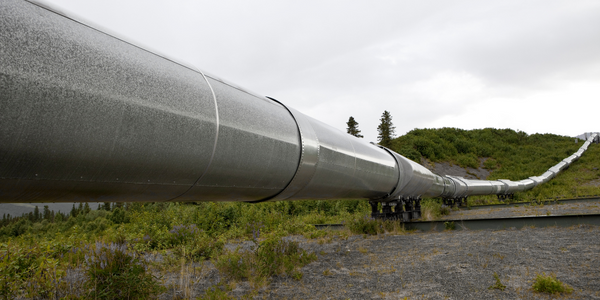Technology Category
- Application Infrastructure & Middleware - Database Management & Storage
- Infrastructure as a Service (IaaS) - Cloud Databases
Applicable Industries
- National Security & Defense
- Oil & Gas
Applicable Functions
- Logistics & Transportation
- Product Research & Development
Use Cases
- Cybersecurity
- Fraud Detection
Services
- Cloud Planning, Design & Implementation Services
- System Integration
About The Customer
Darwinium is a digital risk platform that supports real-time journey orchestration and continuous adaptive trust for digital user authentication. It was built to tackle complex business problems as they happen, adapting to adversaries regardless of how quickly they attack. The platform is designed for developers and data scientists to test, model, and deploy with ease, regardless of business processes or organizational constraints. Darwinium integrates with your Content Delivery Network (CDN) or Proxy as a Darwinium-hosted solution, or optional one-click install onto a new or existing Kubernetes cluster.
The Challenge
Darwinium, a digital risk platform, was facing several challenges in the security and fraud domain. The platform needed to ingest and process data at a high throughput, deal with large volumes of data, and have capabilities to analyze data in a complex way. The database backend needed to handle high-speed writes and serve data for analysis as soon as it was ingested. Darwinium's real-time engine continuously profiles and monitors a digital asset, resulting in large volumes of data. The database needed to be capable of analyzing data at scale, and potentially process an entire year's worth of data. Technical types of fraud and security challenges required storing most digital datapoints for future investigations. The nature of analyzing fraudulent data required complex interactive analysis, and a database system that could respond in timeframes of 1 second or less, while providing a feature-rich functional toolbox.
The Solution
Darwinium chose ClickHouse as their database engine after assessing several solutions. ClickHouse's mutable engine simplified the data ingestion pipeline complexity, and its choice of table engine led to simpler data pipelines. ClickHouse could easily handle a few thousand writes per second, with multiple data pipeline writers writing to a single ClickHouse server at any given instant. It also supported complex data types, which was a fundamental requirement for Darwinium to build upon for interactive analytics. ClickHouse's recent addition of JSON type support further met the analytics requirements of Darwinium. ClickHouse also supported the concept of tumbling data retention windows, where “hot” data could be initially placed on a fast access medium like a local SSD, with the ability to subsequently move the data to a relatively slower but cheaper storage system like S3. ClickHouse was also cloud-native, and could be run from a low-end laptop, an on-premise cluster of nodes, or on any of the myriad hardware configurations possible even on a single cloud provider like AWS.
Operational Impact
Quantitative Benefit

Case Study missing?
Start adding your own!
Register with your work email and create a new case study profile for your business.
Related Case Studies.

Case Study
Taking Oil and Gas Exploration to the Next Level
DownUnder GeoSolutions (DUG) wanted to increase computing performance by 5 to 10 times to improve seismic processing. The solution must build on current architecture software investments without sacrificing existing software and scale computing without scaling IT infrastructure costs.

Case Study
Remote Wellhead Monitoring
Each wellhead was equipped with various sensors and meters that needed to be monitored and controlled from a central HMI, often miles away from the assets in the field. Redundant solar and wind generators were installed at each wellhead to support the electrical needs of the pumpstations, temperature meters, cameras, and cellular modules. In addition to asset management and remote control capabilities, data logging for remote surveillance and alarm notifications was a key demand from the customer. Terra Ferma’s solution needed to be power efficient, reliable, and capable of supporting high-bandwidth data-feeds. They needed a multi-link cellular connection to a central server that sustained reliable and redundant monitoring and control of flow meters, temperature sensors, power supply, and event-logging; including video and image files. This open-standard network needed to interface with the existing SCADA and proprietary network management software.

Case Study
Refinery Saves Over $700,000 with Smart Wireless
One of the largest petroleum refineries in the world is equipped to refine various types of crude oil and manufacture various grades of fuel from motor gasoline to Aviation Turbine Fuel. Due to wear and tear, eight hydrogen valves in each refinery were leaking, and each cost $1800 per ton of hydrogen vented. The plant also had leakage on nearly 30 flare control hydrocarbon valves. The refinery wanted a continuous, online monitoring system that could catch leaks early, minimize hydrogen and hydrocarbon production losses, and improve safety for maintenance.










